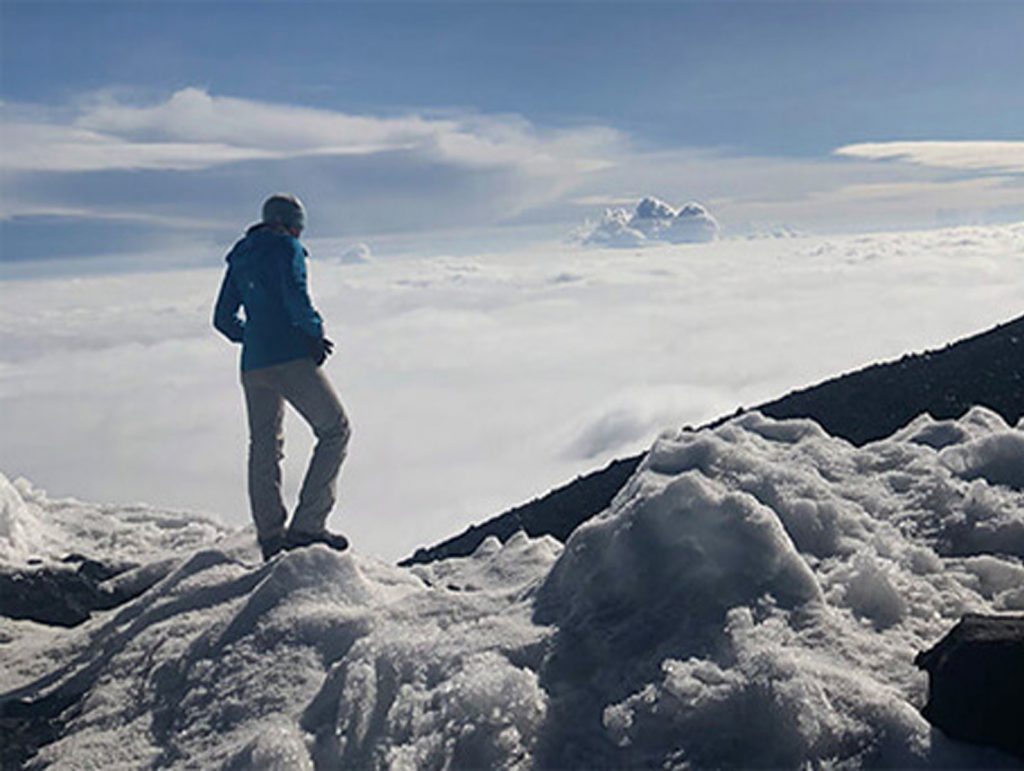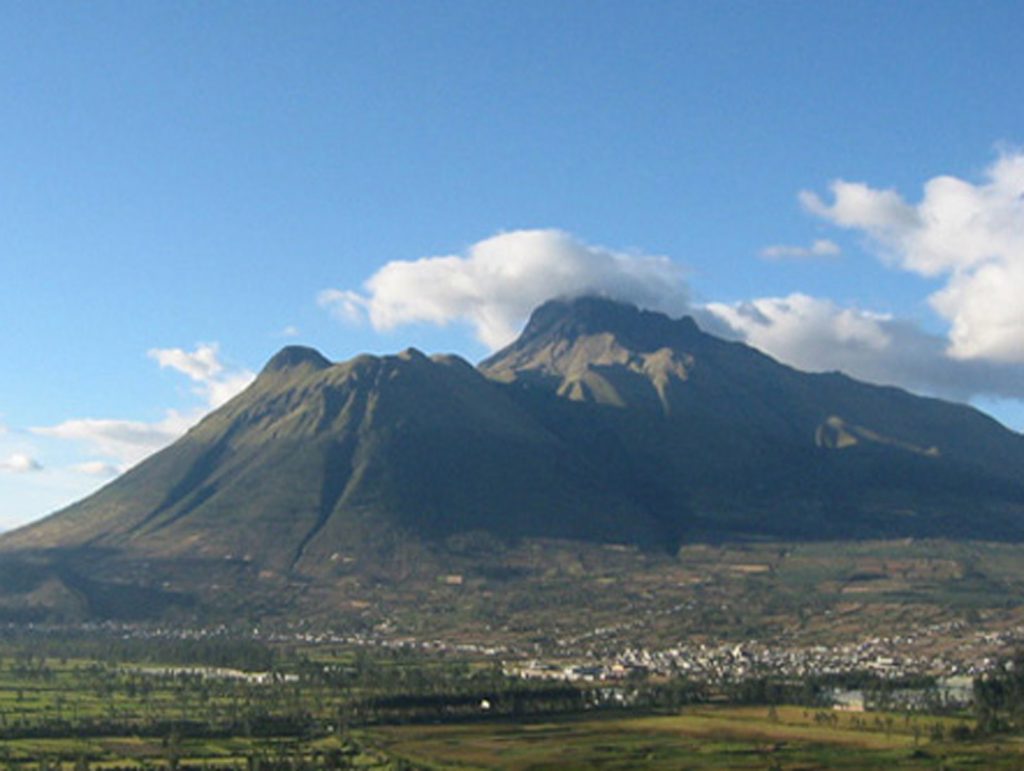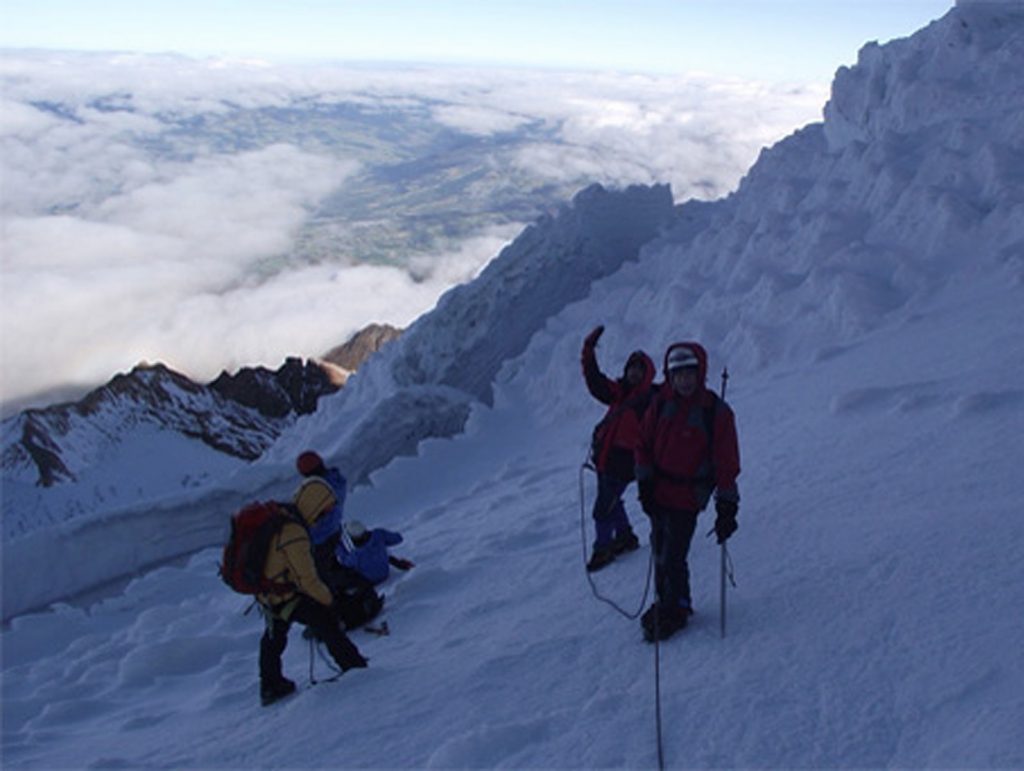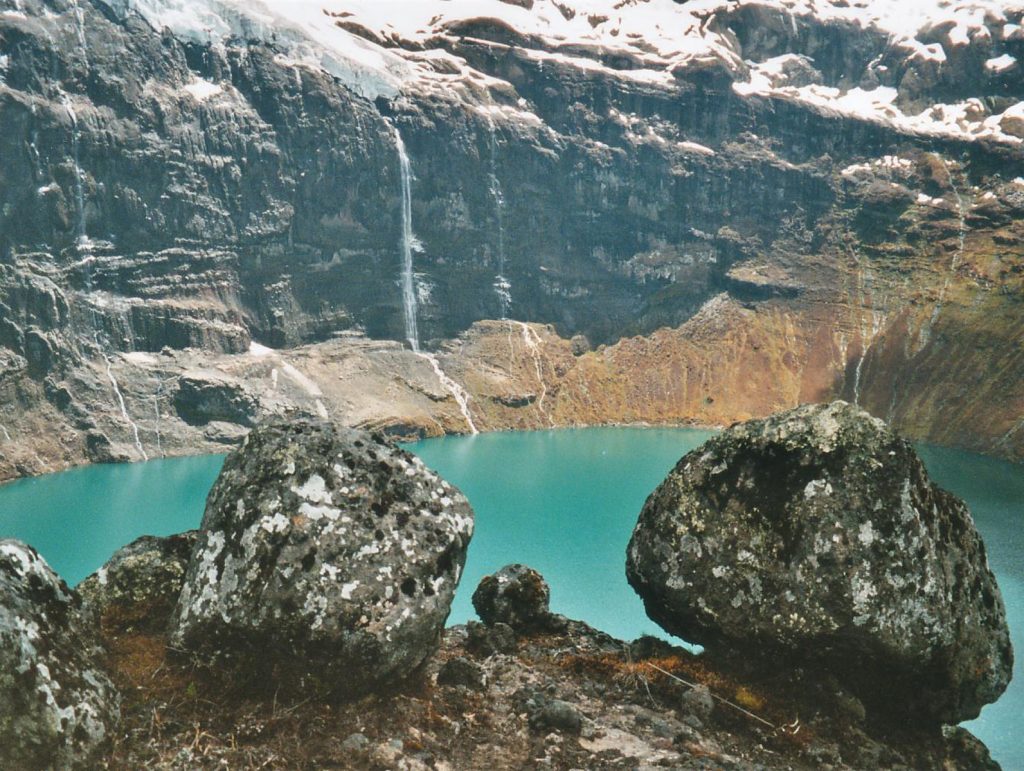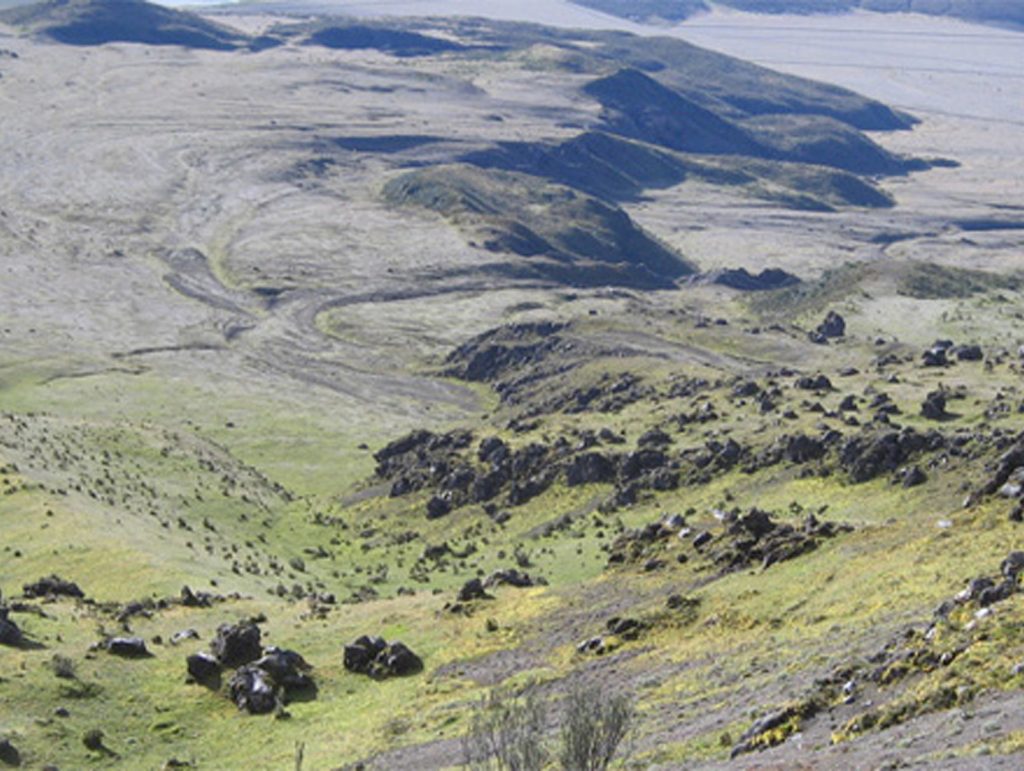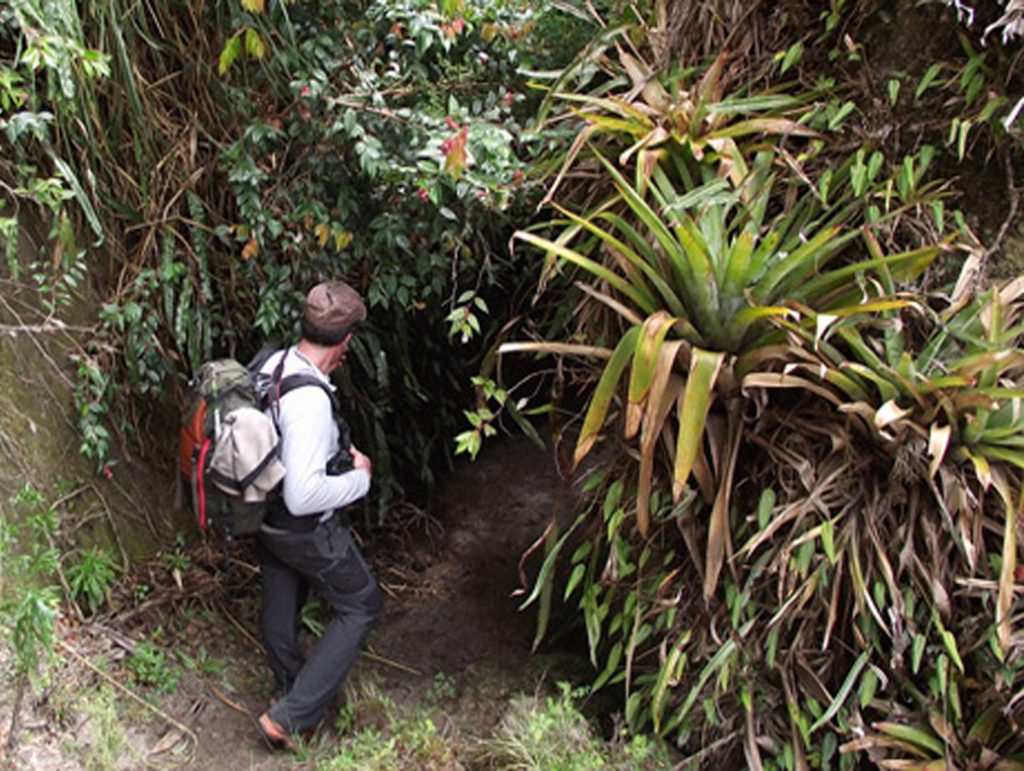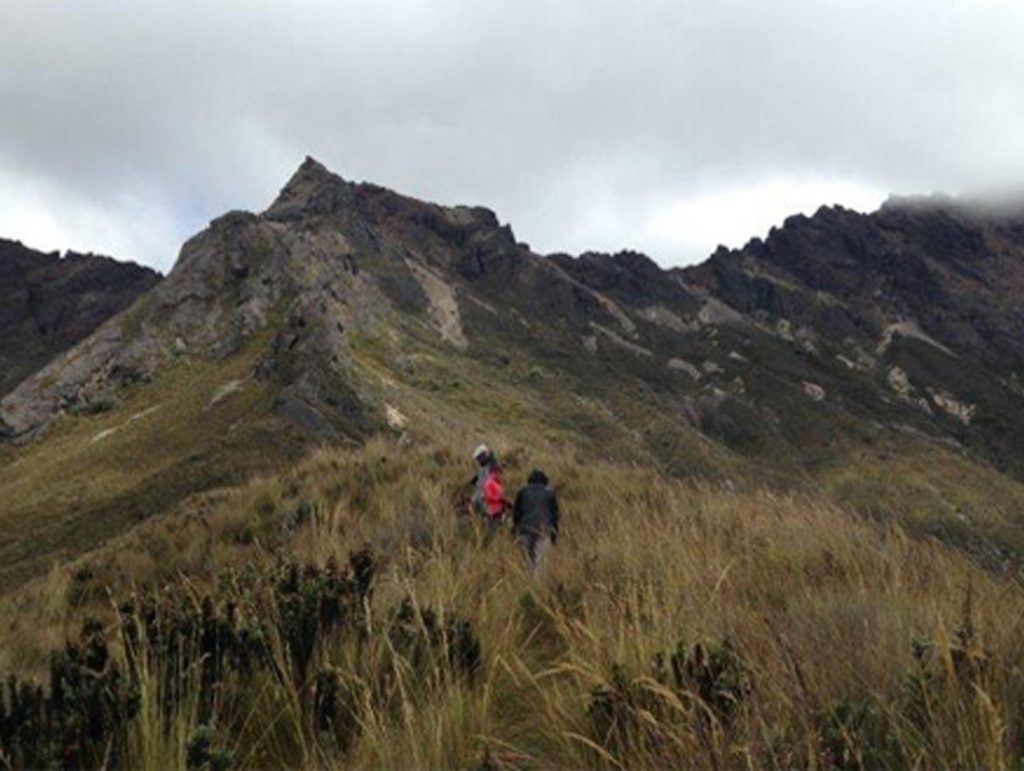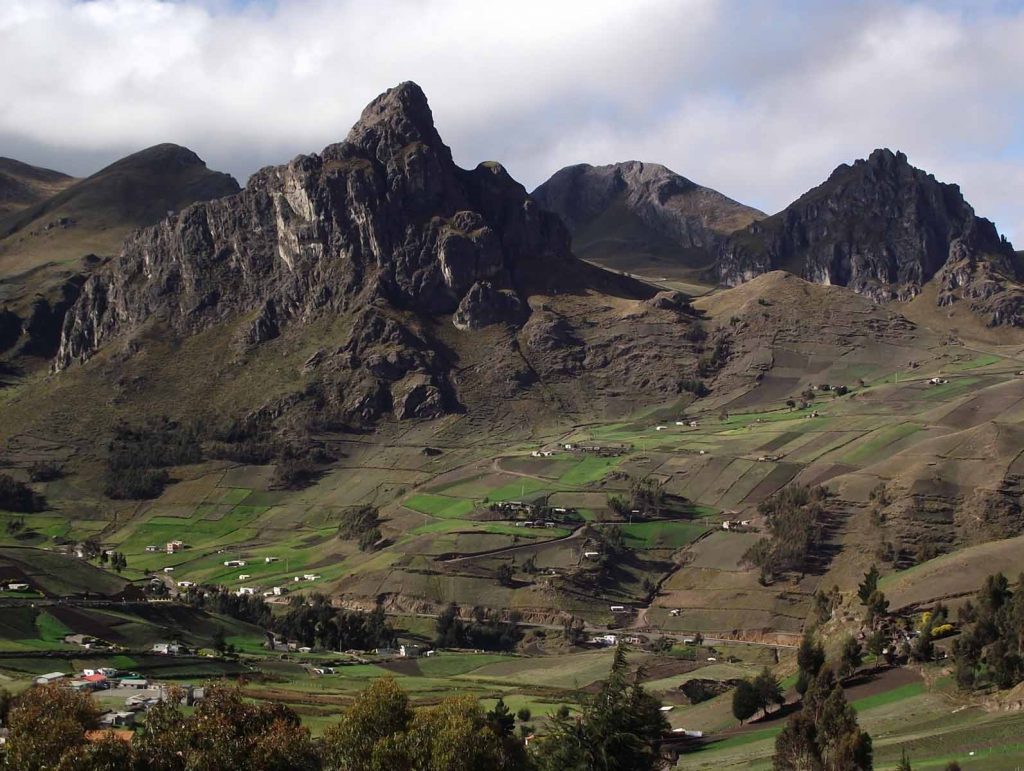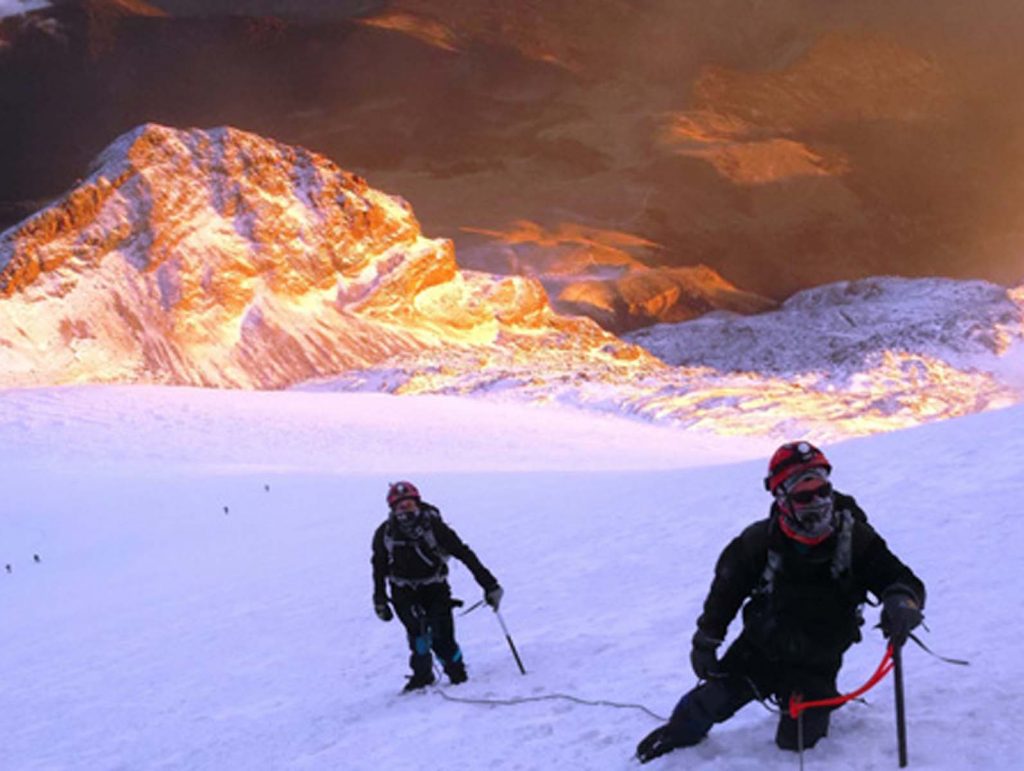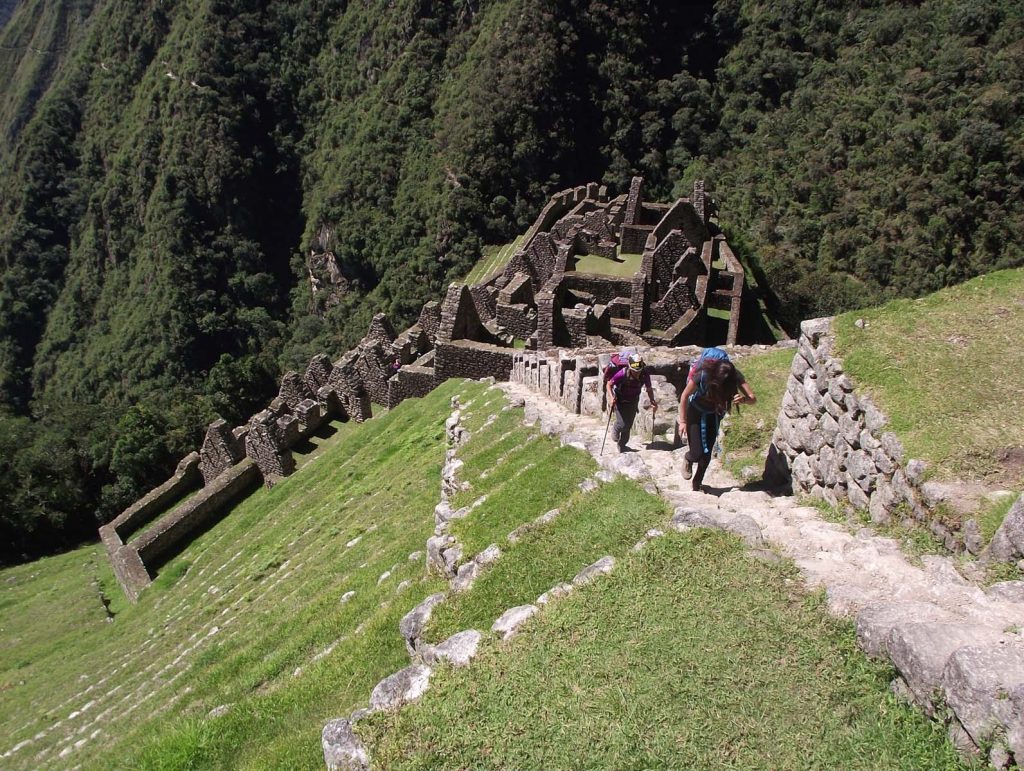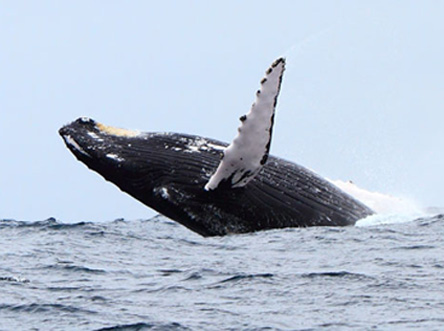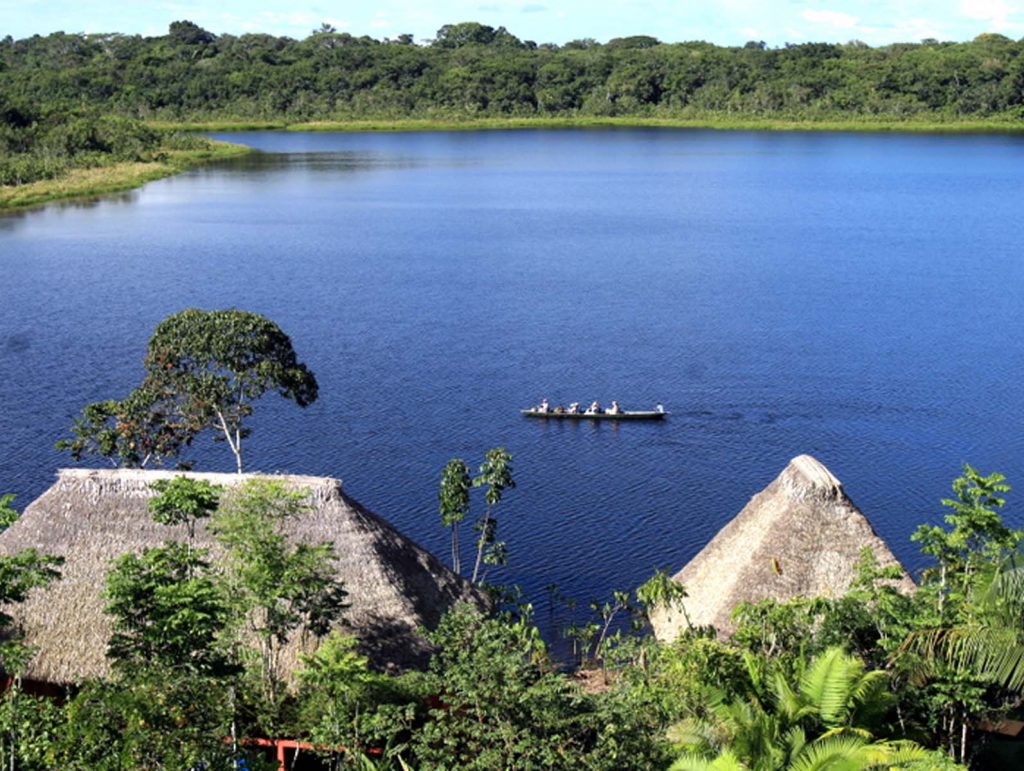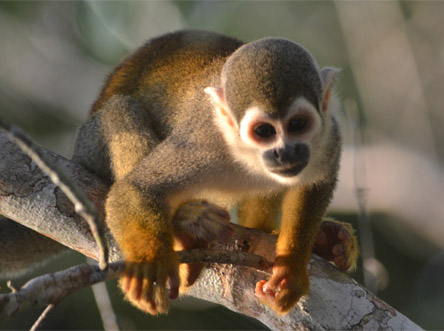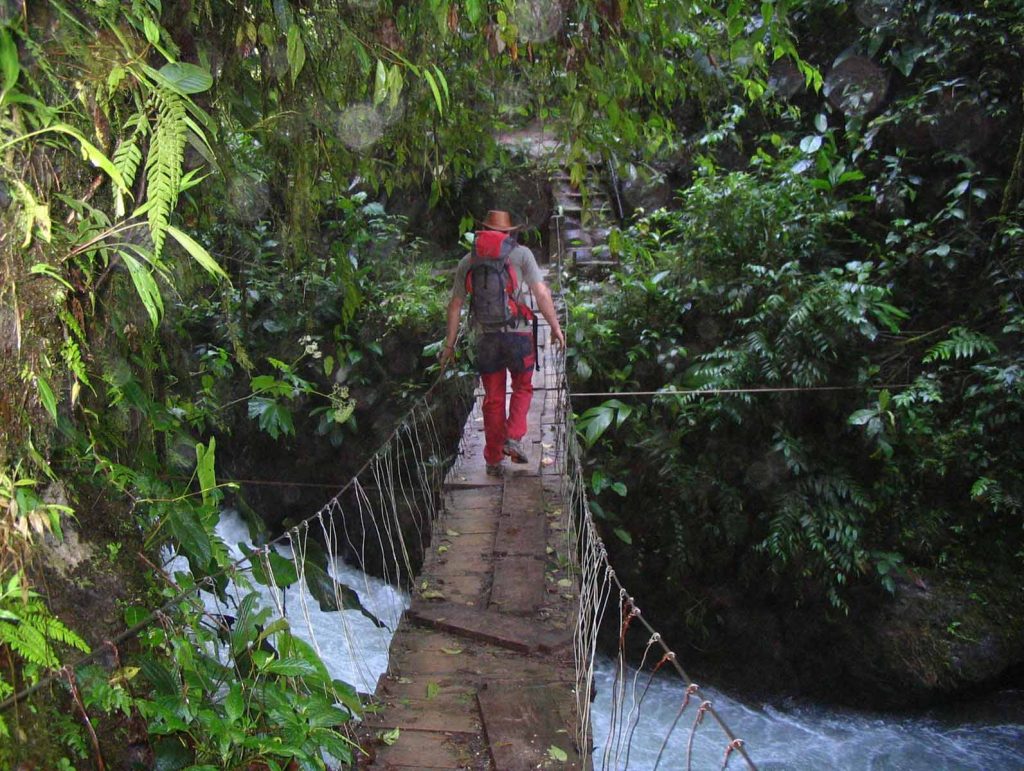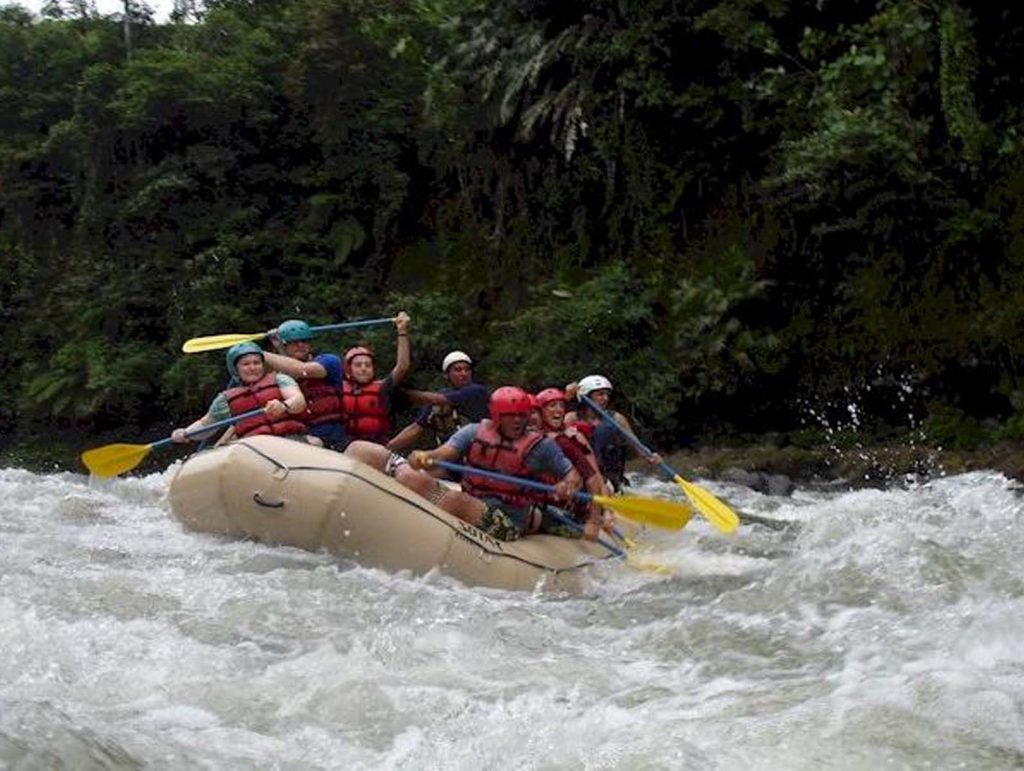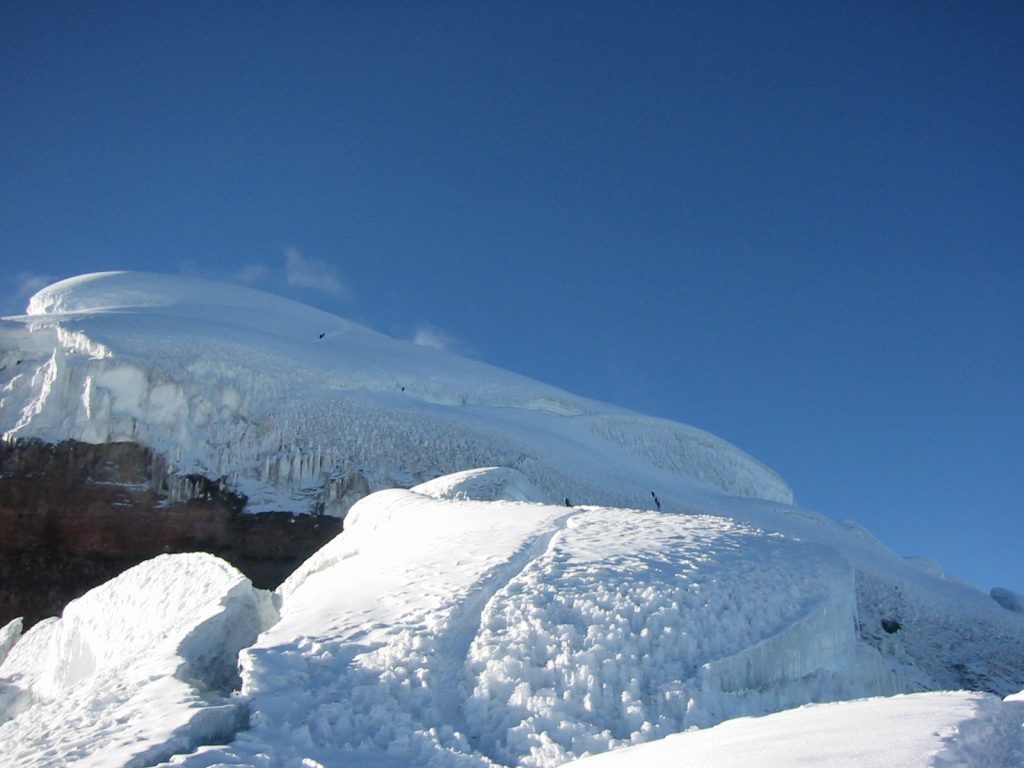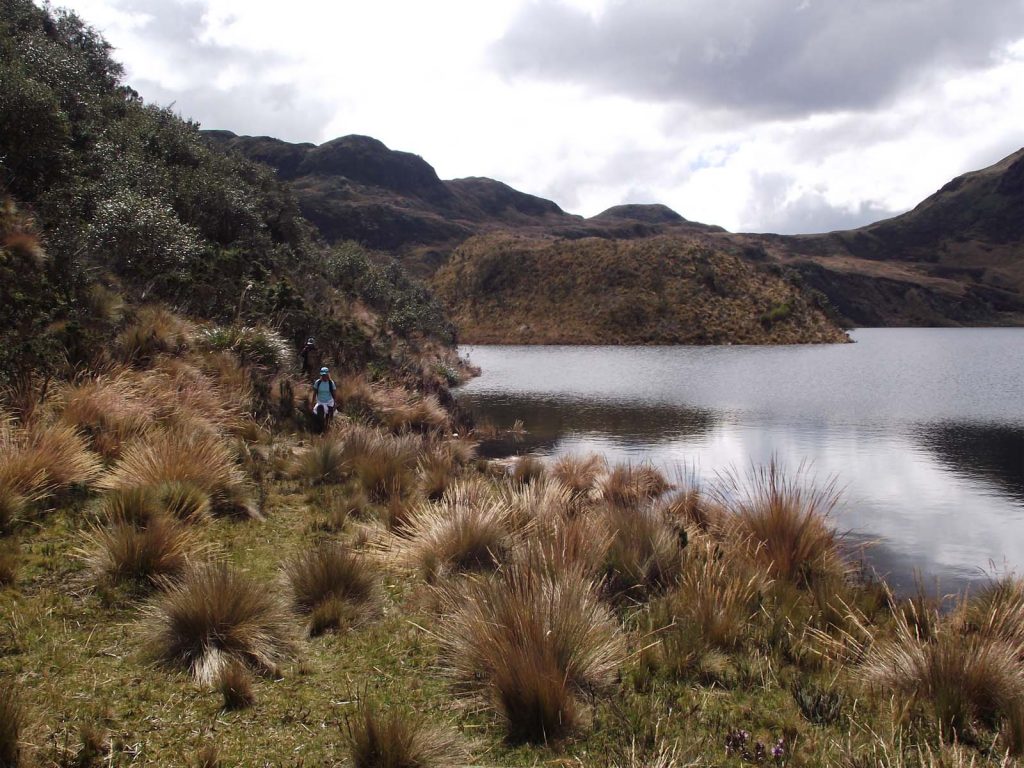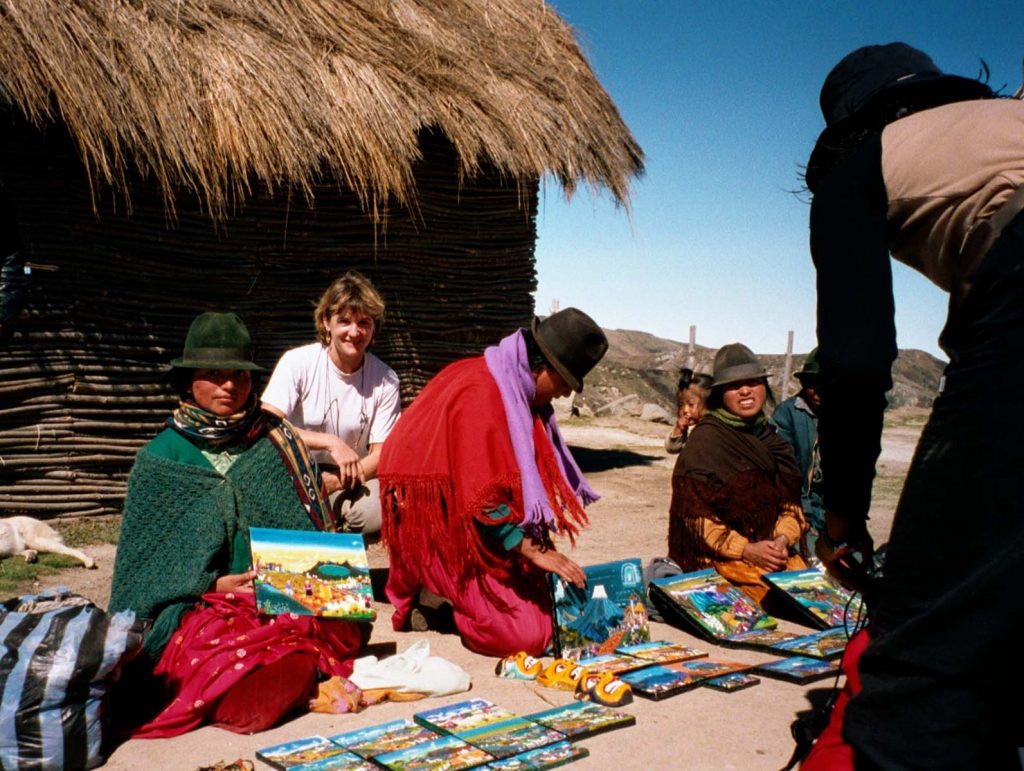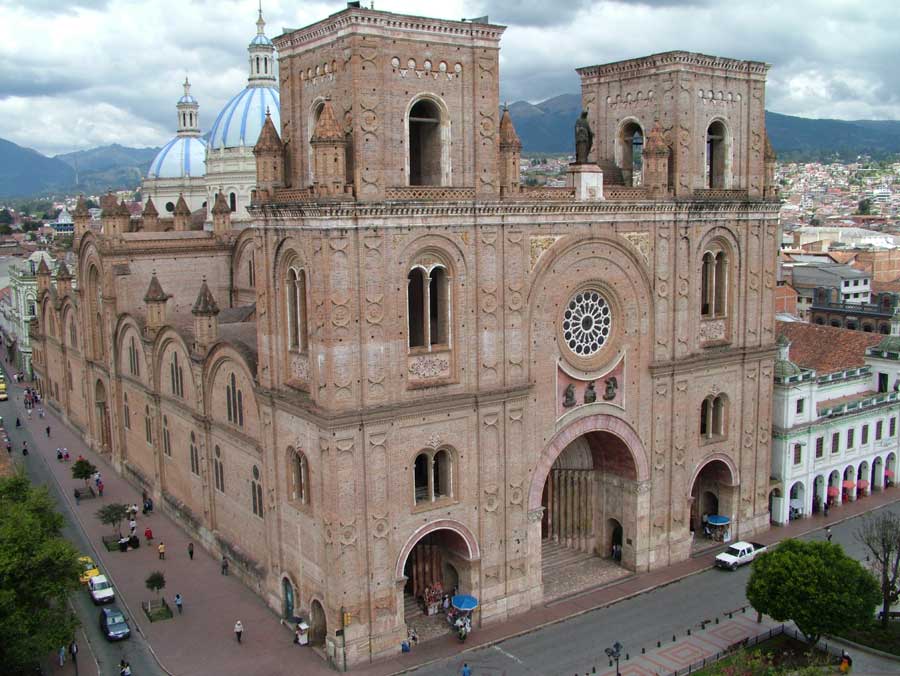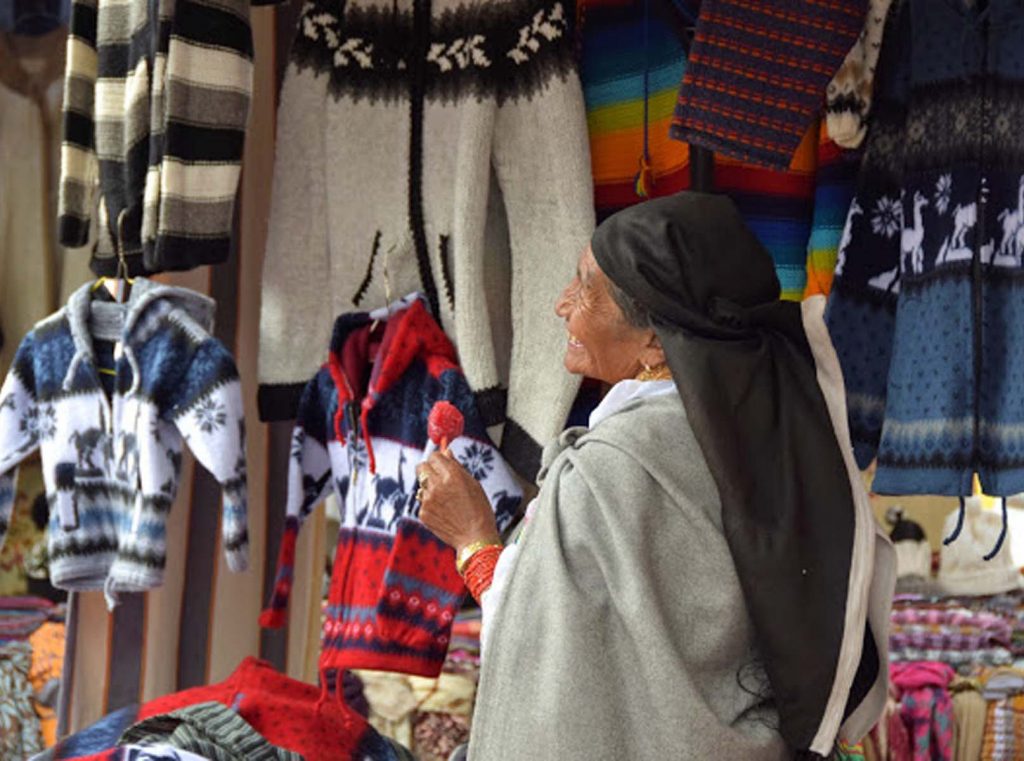The Andes Mountains
Ecuador is traversed from north to south by the majestic Andes mountain range.
Six provinces, comprising a quarter of the country, are located within its borders: Imbabura, Pichincha, Cotopaxi, Tungurahua, Chimborazo, and Azuay.
45% of the population lives in major cities such as Quito, Cuenca, and Riobamba, as well as in smaller, outlying communities.
The Andes offer stunning landscapes, including vast expanses of páramo dotted with volcanoes that reach altitudes of up to 6,310 meters (Chimborazo).
This region is therefore an ideal playground for numerous activities, such as trekking on foot or horseback, mountaineering, mountain biking, rock climbing, and rafting.
It is also home to cities marked by their colonial past; This allows you to visit Quito and its historic center, home to monuments and buildings with Spanish influences, as well as the charming city of Cuenca, known for its cultural and artistic activities, and the famous traditional market of Otavalo.
Transportation: The Pan-American Highway (also known as the Avenue of the Volcanoes) crosses the region from north to south between the Eastern and Western Cordilleras. Numerous buses operate along this route, with varied schedules and affordable fares.
Airlines also fly over the Andes, where two airports are located (Quito and Cuenca).
Here are some locations and towns located on Avenida de los Volcanes:

The administrative capital of Ecuador, Quito, is located on the Andean highlands at an altitude of 2,850 meters.
Although polluted, the city is surrounded by large green spaces (Carolina Park, Metropolitan Park, the hills of San Juan, Panecillo, and Itchimbia, among others).
This city has preserved the vestiges of its history. It has two distinct tourist areas: Colonial Quito and Modern Quito.
Colonial Quito, or the historic center, a UNESCO World Heritage Site, is full of colonial monuments and buildings, squares, and museums.
Modern Quito, on the other hand, is a business center with its large buildings and shopping malls. In this part of the capital lies La Mariscal, a very lively and touristy neighborhood with numerous restaurants, bars, hotels, and shops.
Things to see and do:
– Plaza de Independencia: In colonial Quito, a beautiful square where the Government Palace and the Archbishop’s Palace are located
– Quito Cathedral (Cathedral Primada de Quito) and El Sagrario (the cathedral’s former chapel)
– Santo Domingo Square and Church
Baroque-style churches:
– San Francisco Monastery
– Cantuña Chapel
– San Diego Monastery
– La Merced Church
– La Compañía de Jesús Church
– San Agustín Church
– San Juan Evangelista Church
– Virgen del Panecillo Church, which stands on a hill overlooking Old Quito

Museums:
– Central Bank Archaeological Museum (artifacts dating from prehistory to the colonial period)
– La Casa del Alabado Pre-Columbian Art Museum
La Casa del Alabado houses some of the most representative pre-Columbian artworks in present-day Ecuador, offering interpretations of their artistic and anthropological significance and providing a meaningful experience for every visitor.
The museum is organized thematically and is located in a 17th-century heritage house, very close to the Plaza de San Francisco in Quito’s historic center.
– San Francisco Museum (religious art)
– National Museum of Colonial Art (17th and 18th-century painting and sculpture)
– Metropolitan Cultural Center and its Alberto Mema Caamaño Museum (wax museum)
– City Museum (traces the lives of Quito’s inhabitants)
– La Capilla del Hombre Museum (live history of Latin American inhabitants)
– Jijón y Camaño Museum (pre-Columbian and colonial artifacts)
– Guayasamín Foundation (Ecuadorian art)
– Vivarium
– Amazonian Museum (traces the lives of different Amazonian communities)
– Camilo Egas Museum (modern art)
– Casa de Sucre (former home of General Sucre)
Near Quito are tourist sites:
– Mitad del Mundo (Middle of the World), where the equator passes
– El Intiñán Solar Museum
This museum, located on the outskirts of Quito, was built in 1989 around a few centuries-old huts, 200 meters from the midpoint of the world.
Discover a compelling combination of physics, folklore, and Ecuadorian culture at the Intiñán Solar Museum. The museum’s main attractions revolve around the equator. Watch a demonstration of the Coriolis effect as you observe water swirling clockwise or counterclockwise depending on which side of the equator you’re on. Try balancing an egg on your fingernail and then try walking in a straight line without losing your balance.
– The Papallacta hot springs, located amidst a stunning natural setting.
– Teleferico: The cable car that ascends Pichincha.
Otavalo:
Located just two hours from Quito, the Otavalo market is the most famous in the country. It showcases Ecuadorian handicrafts, including jewelry, hats, bags, woolens, musical instruments, hammocks, and more.
It is divided into several sections:
– a more touristy section featuring Ecuadorian handicrafts;
– a section for locals with clothing and gadgets of all kinds;
– and finally, a food section with stalls selling fruits, vegetables, meats, spices, dyes, and more.
– Cotopaxi:
Video about Cotopaxi National Park
Quilotoa Lagoon
This crater with its steep sides shelters a splendid lagoon with turquoise waters that contrast with the dark colors of the surrounding rocks.
The small village of Quilotoa, located on the crater’s slope, offers a few accommodations and a small craft market.
To get there by vehicle, there is only one well-maintained road, which passes through the village of Zumbahua. If you go on a Saturday, you’ll have the chance to see its local market, which is very well-known throughout the country.
Several hikes are possible around the crater:
– Hike around the crater on a trail overlooking the lagoon to admire it from different viewpoints (4-5 hours)
– Hike down to the lagoon (round trip 1.5-2 hours). This descent and ascent can be done on foot or by mule. – Reaching Chugchilan from Quilotoa (approximately 5 hours)
For each, you must be careful of the altitude as the lagoon is located at 4000 m.

Baños:
This welcoming town lies at the foot of the imposing Tungurahua volcano. With its abundance of hotels and restaurants, numerous hot springs, colorful murals adorning the facades, and lush surrounding vegetation, Baños has charmed many visitors.
Things to see:
– Basilica of Our Lady of Agua Santa
– Statue of the Virgin of Agua Santa (at the top of a staircase overlooking the valley)
– Bellavista (viewpoint overlooking the city, 45 minutes from Baños)
– Luna Runtún (spa hotel where you can sip a juice with a splendid view of the city and the valley). For a 2-hour hike, it’s possible to link these three viewpoints from Baños. Climb to the statue of the Virgin, then access Luna Runtún via a balcony trail, and finally descend to Bellavista before returning to Baños.
– San Francisco Bridge
– Inés Maria Waterfall (4 km walk from Baños)
– Sugarcane Market
Activities:
– Baths: The city has four municipal baths with abundant natural beauty. Minerals.
– Massages: Massage centers abound in the city. There’s something for everyone (Swedish, Californian, hot stone, reflexology, etc.).
– The Waterfall Route (for a mountain bike descent from Baños to Puyo): This 60-kilometer route, winding through the Pastaza River valley, offers views of the different vegetation zones. It passes by numerous waterfalls, the most famous and impressive being El Pailón del Diablo (The Devil’s Flick). You’ll need to leave your bikes there and take a path leading to the falls.
Several agencies offer mountain bike rentals starting at $5 per day.
Several hikes are possible directly from Baños; 12 km south of Baños, numerous trails begin at Manto de la Novia (The Bride’s Mansion), after crossing the river by cable car.
For the more adventurous, Sangay National Park is located nearby. Baños offers excellent trekking opportunities.
– Rafting: Excursions ranging from 2 hours to several days are available for all levels.
– Canyoning
– Horseback riding

Riobamba:
Located at an altitude of 2,794 meters, this city lies at the foot of the country’s highest peak: Chimborazo.
Buildings have been destroyed several times by earthquakes, which explains the scarcity of colonial-era monuments in the city.
The city is also the starting point for climbing Chimborazo or El Altar, as well as for trekking.
Things to see/do:
– The Andean Train
– The Cathedral and its Baroque façade
– Basilica of the Sacred Heart of Jesus
– Maldonado Park
– La Libertad Park
– Railway Museum
Located a 10-hour bus ride from Quito, Cuenca is also a UNESCO World Heritage Site.
This colonial city boasts a rich cultural heritage and is therefore a great place to stop during a trip to Ecuador.
It’s very pleasant to stroll along the Tomebamba River and through its cobblestone streets, where you can discover numerous whitewashed chapels, the immense cathedral with its large blue domes that stands facing the park, its historic facades, and its parks…
A large covered food market is located near Plaza San Francisco, and a craft market runs along the Tomebamba River.
For stays of several days, we recommend a short excursion to Cajas National Park, located 30 km from Cuenca, or a visit to the Inca ruins of Ingapirca.
To see / To do:
– Catedral Inmaculada Conception (splendid cathedral which stands out next to the central square
– Vieja o Inglesia El Sagrario Cathedral (old cathedral)
– Santo Domingo Cathedral….
– courthouse and its beautiful patio
– Mirador de Turi (Beautiful view of the city)
– Inca ruins of Ingapirca
Museums:
– Museum of Aboriginal Cultures (Indian pieces from all periods up to the 16th century)
– Banco Central Museum (ethnology, 19th century art, religious art, archeology, and numismatic collection)
– Museum of Religioso Art
– Museum of Esqueletology (skeletons of many species of Ecuadorian fauna)
– Remigio Crespo Toral Municipal Museum (regional crafts)
– Museum of Modern Art
– CIDAP – Museum of Popular Arts Interamericano (crafts of the indigenous communities of the Sierra and the Amazon)






